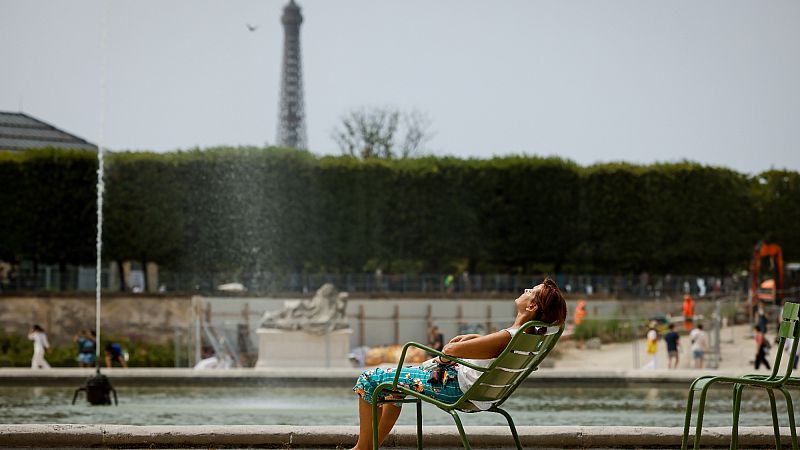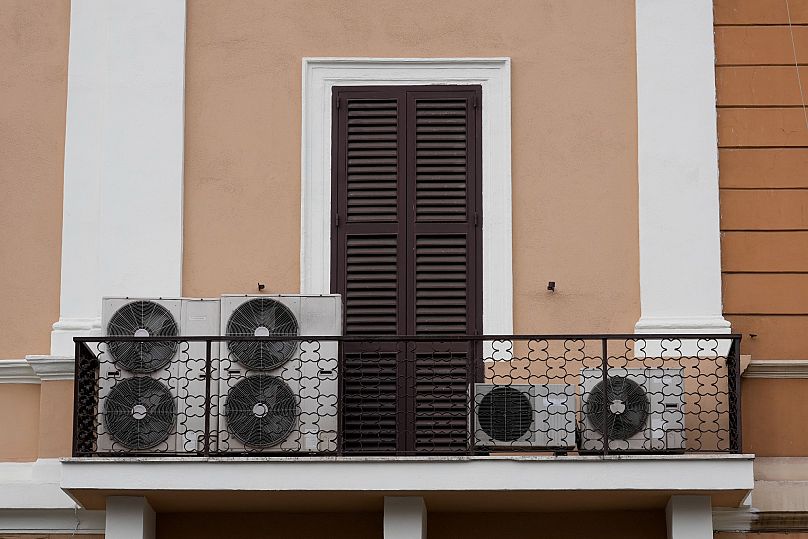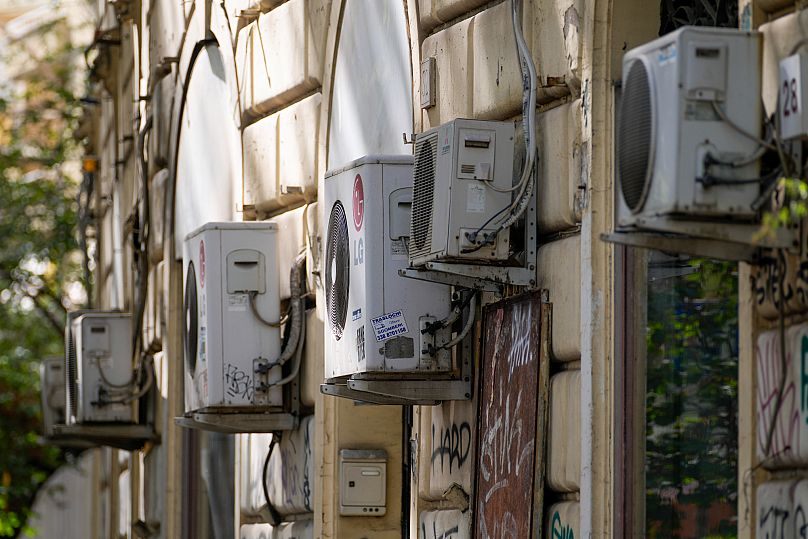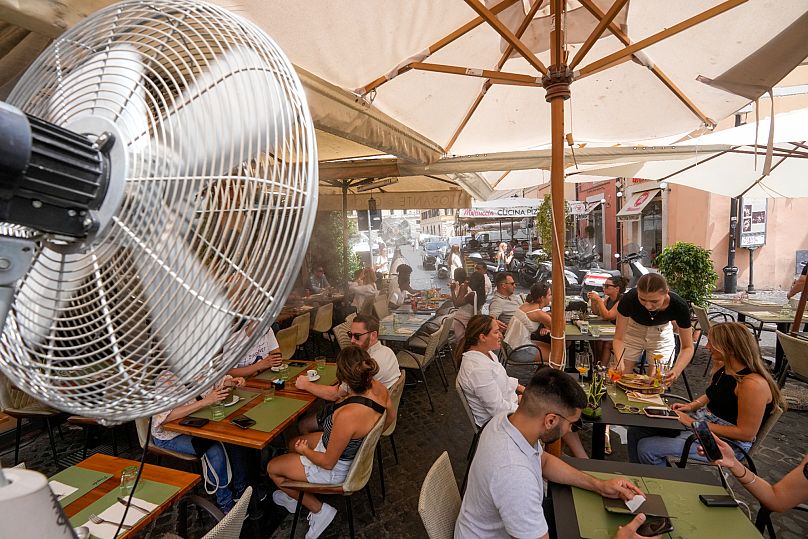
In a summer when radio failed to deliver a single memorable hit, one subject managed to keep everyone talking: Europe’s troubled relationship with air conditioning.
It’s not a new debate. Every few years, as temperatures climb, the transatlantic divide on cooling habits resurfaces.
But this year, it grew unusually fierce, straining cultural ties between Europeans and Americans almost as much as Trump’s tariffs or disagreements over Ukraine’s future.
Americans, baffled that Europeans can live without constant cooling, defended their beloved AC with the same bitterness Italians judge other cultures' pizza toppings or the French bristle at foreigners mangling ‘la langue française’.
The numbers of this divide are stark: nearly 90% of US households have air conditioning, compared with around 20% in Europe, with some countries falling far below that figure.
In France, the topic has even entered the political arena, with far-right leader Marine Le Pen calling for a major air conditioning infrastructure plan.
Meanwhile, international news outlets like the Financial Times and Wall Street Journal warned that Europe’s slow adoption of cooling technology is already costing lives.
Critics have gone so far as to blame EU regulations (or the flagship environmental policy Green Deal itself) for keeping Europeans sweaty.
The myth of the AC ban

Like most things in the EU, even air conditioning comes with an acronym.
The Brussels bubble doesn’t talk about AC like normal people do, but about HVAC, namely heating, ventilation, and air conditioning systems.
But does Brussels really hate air conditioning?
Despite what some critics imply, the EU has never banned HVACs. Nor do its rules dramatically restrict installations.
What the EU does regulate are the types of systems allowed, imposing limits on harmful refrigerants, requirements for greater efficiency, and guidelines for buildings.
The reasoning is straightforward.
Europe has committed to becoming climate-neutral by 2050. Left unchecked, a sharp increase in inefficient air conditioners would make that goal impossible.
So Brussels isn’t opposed to cooling, it just wants the technology to align with climate policy.
What the F... gas

The centrepiece of this policy adaptation is the recently revised F-gas Regulation, which phases out hydrofluorocarbons (HFCs), potent greenhouse gases used in many traditional cooling systems, by 2050.
Through these rules, manufacturers are being pushed to adopt cleaner alternatives such as carbon dioxide and ammonia.
Some industry players argue this has slowed growth in the heat pump market, a technology that provides heating, cooling, and hot water.
Brussels counters that falling gas prices, weaker subsidies, and consumer caution are the real reasons, putting its hope on a wave of new, HFC-free models already hitting the market.
The Ecodesign Directive, another piece of the puzzle, sets minimum efficiency standards. This effectively bans the least efficient models and nudges manufacturers toward greener designs.
The rules tie into the Energy Performance of Buildings Directive, which requires upgrades in Europe’s ageing housing stock through better insulation and, indeed, greener heating and cooling
Both measures reflect the same principle: the EU isn’t trying to kill air conditioning, it just wants it done sustainably.
National quirks...

Much of the practical regulation on air conditioning comes from member states, though.
Spain, Italy, and Greece, for example, limit how cold public buildings can be set in summer, often no lower than 27°C.
The aim is to conserve energy, especially during supply crises.
Some historic city centres restrict the installation of external AC units for aesthetic reasons.
There are environmental concerns, too. Studies show that AC units can raise outdoor temperatures in dense urban areas by several degrees, worsening the so-called “heat island effect.”
But these are exceptions, not an explanation for Europe’s overall low uptake.
...and cultural resistance

The rest of this story lies in history and culture.
Southern Europe built its cities to cope with heat: thick walls, shaded windows, and street layouts designed to maximise airflow.
That’s also why white paint dominates the picturesque skylines of Mediterranean places like Santorini in Greece or Vieste in Italy: The bright surfaces reflect sunlight and radiant heat, helping interiors stay cooler.
In northern Europe, on the other hand, summers were once mild enough that cooling was rarely needed.
Air conditioning, when it appeared in Europe, was seen as a luxury or even a health risk. Many Europeans still believe exposure to cold air can make you sick, and the stereotype persists that AC is for rich people.
The energy question
Then there’s the money issue.
European electricity is far pricier than in the US, and the 2022 energy crisis only reinforced the point.
Even though prices have since stabilised, the extra expense of running an air conditioner remains prohibitive for many households.
AC still represents only about 0.6% of household electricity use across the EU, but its share is rising quickly.
The heatwaves of June and July 2025 pushed daily demand up by as much as 14%. Prices spiked above €400/MWh in Germany and €470/MWh in Poland, even as solar power hit record highs.
That surge in demand underscores the challenge. Europe’s power grid, already strained, must prepare for hotter summers and higher cooling needs.
What comes next

So no, Brussels does not hate air conditioning. But it does want to ensure that cooling technology fits within Europe’s broader climate and energy goals.
The European Commission has always made clear that member states are best placed to decide on specific energy-saving measures.
But it is also preparing the EU energy sector for an era of recurring and more intense heatwaves, focusing on storage, interconnections, and grid resilience.
This could not exclude a specific intervention in the sector in the medium term, although nothing has been pencilled for the moment.
In the end, Europe’s low adoption of air conditioning isn’t the result of bans or bureaucratic hostility. It’s rather a mix of culture, cost, tradition, and policy.
And as summers grow hotter and heatwaves become the new normal, that balance will be tested more with every passing year.







